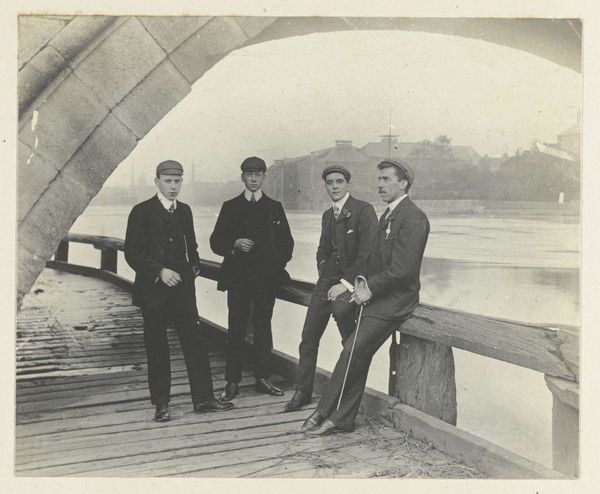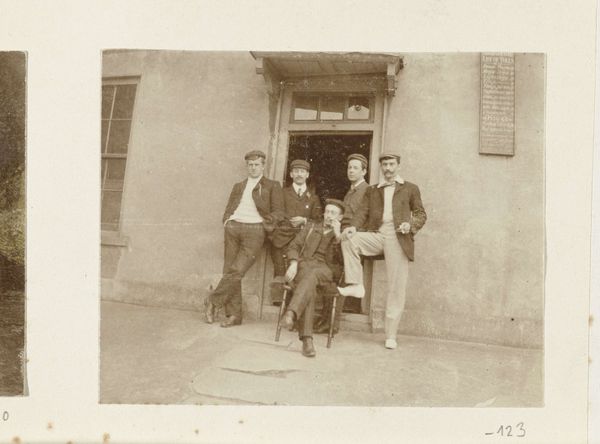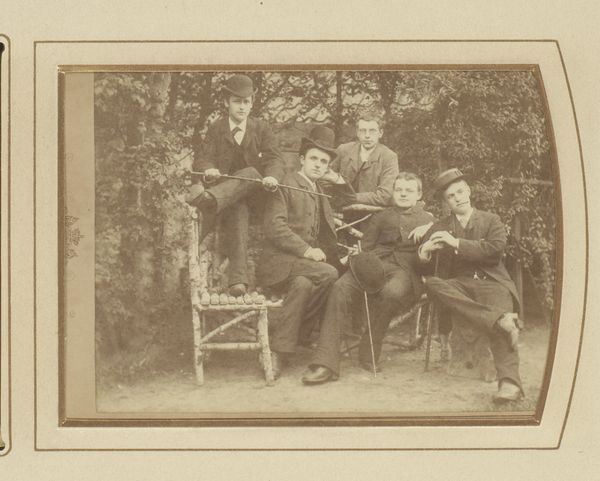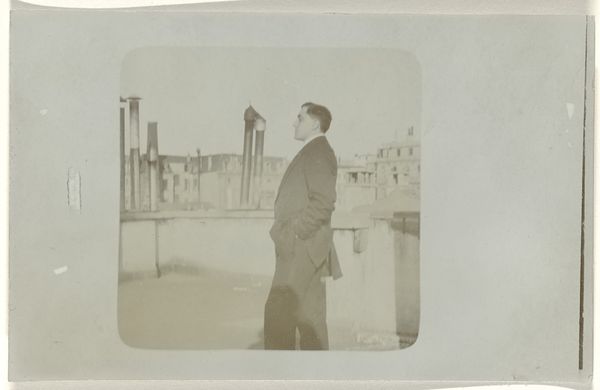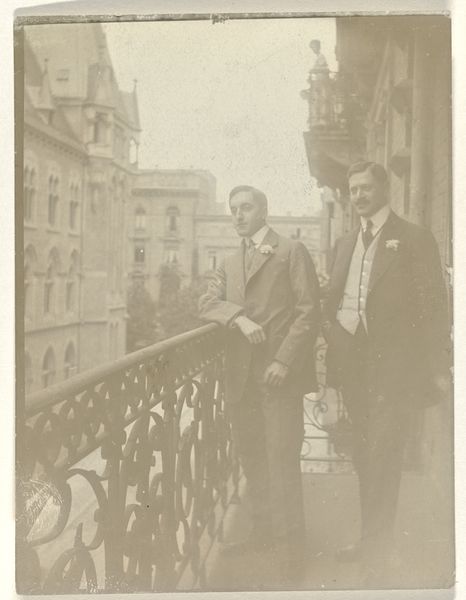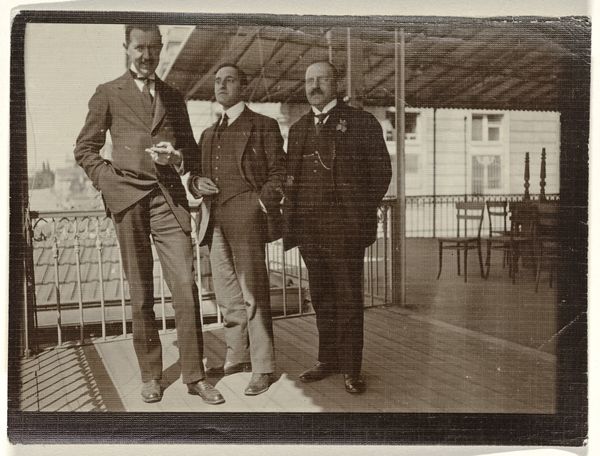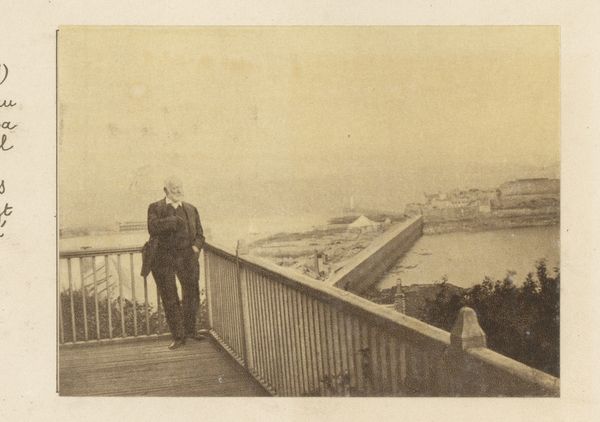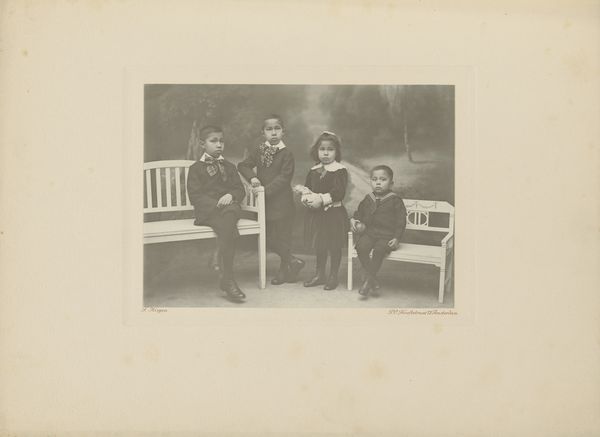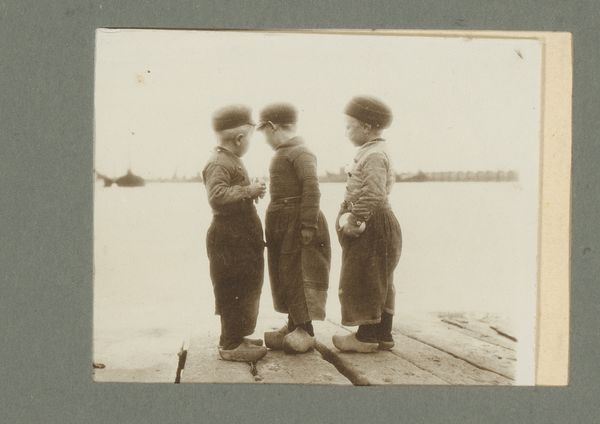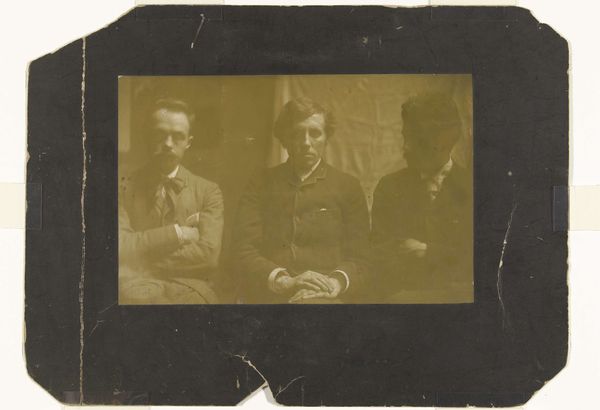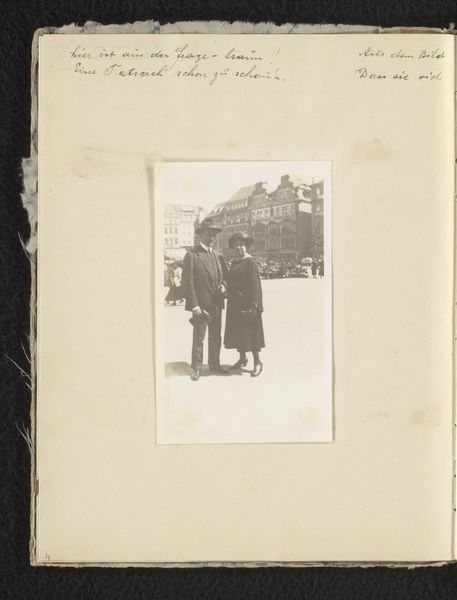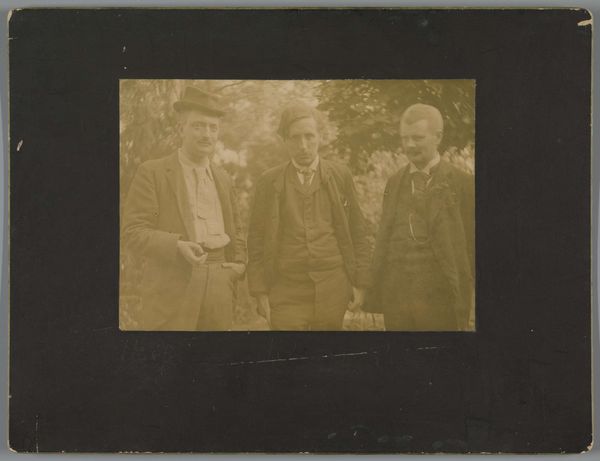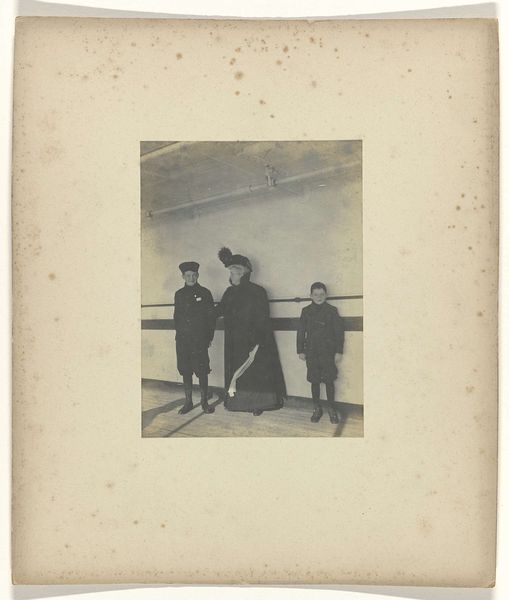
Dolph Kessler en twee vrienden poseren onder Gainsborough Bridge c. 1903 - 1904
0:00
0:00
photography, gelatin-silver-print
#
portrait
#
archive photography
#
photography
#
historical photography
#
gelatin-silver-print
#
genre-painting
Dimensions: height 80 mm, width 110 mm, height 363 mm, width 268 mm
Copyright: Rijks Museum: Open Domain
Curator: Here we have "Dolph Kessler and Two Friends Posing Under Gainsborough Bridge," a gelatin-silver print estimated to have been created between 1903 and 1904. It’s currently held in the Rijksmuseum's collection. Editor: It has this wistful, sepia-toned feeling, doesn’t it? Makes you want to write a screenplay about dashing young men with secrets on the riverbank. The light's so soft, like a faded memory. Curator: I'm drawn to the details of the bridge construction. You can see the individual stones and the joinery in the wooden beams of the bridge. Photography at the turn of the century had a practical purpose; documenting infrastructure projects such as bridges served commercial interests. Editor: Definitely, it speaks of labor and industry, but those three men bring their own little narrative to the backdrop. Almost like players in a stage setting. Who are they? What are they doing out there? Curator: Kessler came from a privileged background, so this kind of leisurely activity, a bit of genre painting really, represents a specific class's relationship to the built environment and leisure time. They're participating in a burgeoning visual culture that normalizes their status. Editor: And there they are under this beautiful arch; protected or maybe captured. That framing gives the photograph this beautiful depth but also isolates the characters. Their social moment photographed for a lasting memory. Curator: It's worth noting the gelatin-silver printing process, which by this time allowed for much sharper images and a wider tonal range, facilitating the recording of minute details and contributing to a sense of realism. Editor: It’s incredible how that chemical transformation from negative to print carries all these stories. Looking closer at the detail makes me appreciate what Kessler accomplished here. He left behind such an impressionistic representation. I wonder what it meant to them, to be suspended in that single moment under the bridge. Curator: Examining these works through their materials and historical conditions can really transform our understanding of art history itself. Editor: Absolutely. From fleeting feeling to concrete object lesson: That's where our conversation under the bridge leaves us.
Comments
No comments
Be the first to comment and join the conversation on the ultimate creative platform.
